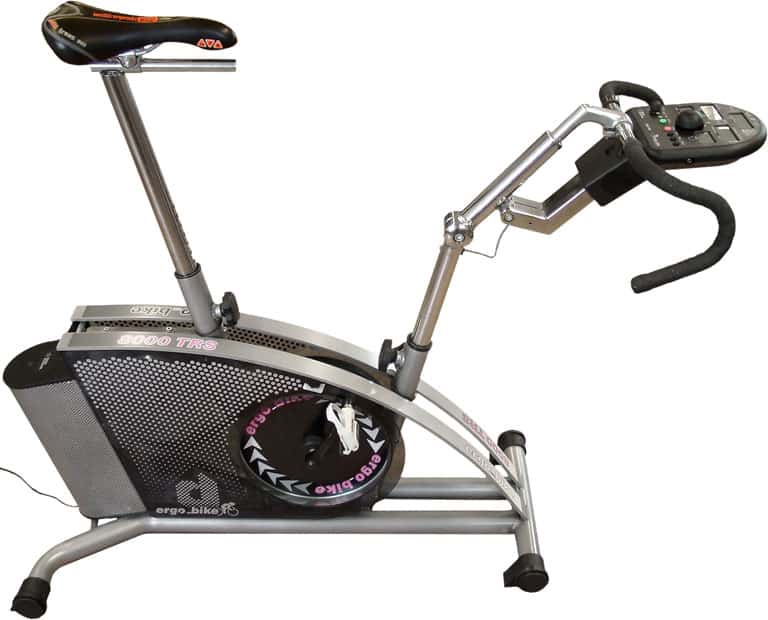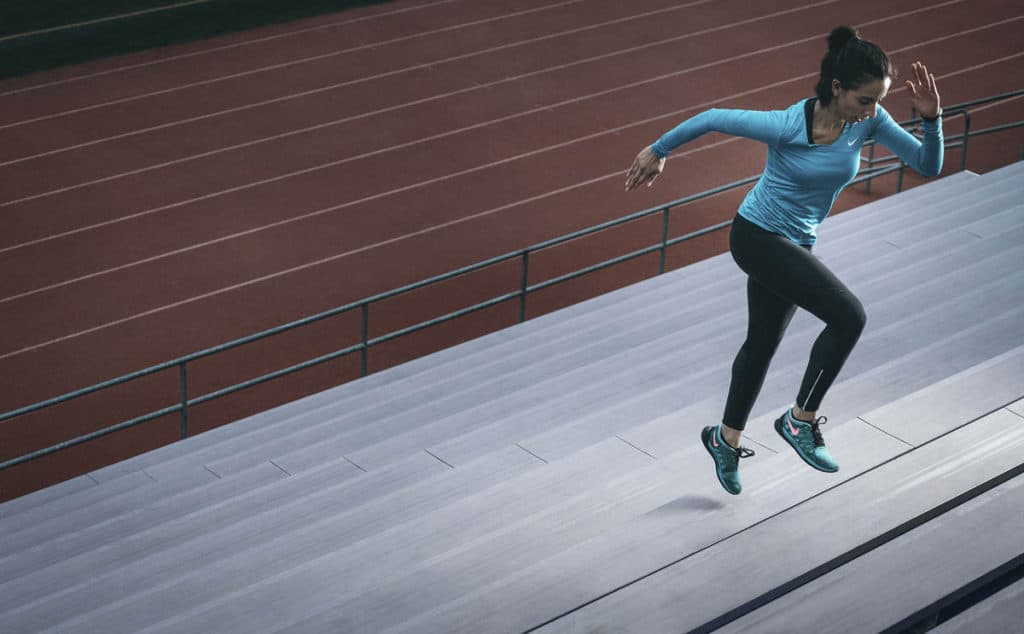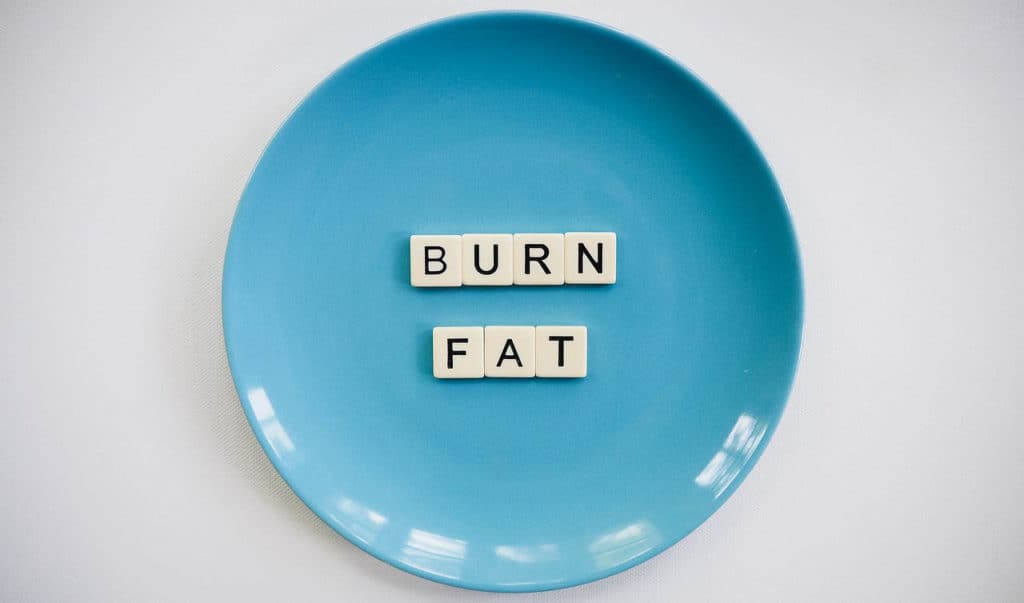HIIT vs Tabata which one is better for you? We all know how important it is to exercise, as living a healthy lifestyle could help prevent health issues such as diabetes and obesity. However, most people find it difficult to create time to exercise due to today’s fast-paced world.
Having a family can make it difficult to find the time, I know from experience.
This has led to the popularity increase in workouts that are shorter alternatives to the more conventional workouts which can last between 45 – 60 minutes while offering the same benefits.
Among the most popular of these alternatives are high-intensity interval training and the Tabata protocol.
The first difference between HIIT and Tabata is the work duration. With HIIT, the sessions involve exercising anywhere from half a minute to two minutes. Tabata has a standard universal work duration of 20 seconds.
HIIT and Tabata also have different work duration to recovery/ rest ratios. For Tabata workouts, the work duration to rest ratio is set at 2: 1. For HIIT workouts, this ratio may vary. You can opt to go for 1:1 or 2:1 depending on the specific exercises you will be performing.

Below is a detailed and comprehensive look at all the important aspects you need to know about HIIT vs. Tabata.
What Is HIIT?
High-intensity interval training is a cardiovascular workout that involves alternating between short, intense periods of anaerobic exercises and short less intense recovery or rest periods.
It is also referred to as sprint interval training or high-intensity intermittent exercise.

HIIT workouts typically consist of a warm-up phase, followed by repetitions of high-intensity activity separated by moderate-intensity activity for recovery, then the cool-down phase.
The high-intensity activity should be performed at near maximum intensity, where your heart rate is between 75% and 90% of your maximum heart rate.
During the moderate-intensity recovery period, your heart rate should be between 50% and 65% of your maximum heart rate.
The most widely utilized work to recovery ratio is 2:1. It is worth knowing that this is not a mandatory rule. You may use different work to recovery ratios (1:1 is also popular) in your HIIT workout sessions.
A simple example of a HIIT workout would be performing ten intervals whereby you sprint for 40 seconds and then jog or walk briskly for 20 seconds for each of the ten intervals.
HIIT workouts typically take less than thirty minutes, including the warm-ups. However, there is no standard or universal session duration for HIIT. It may last anywhere between four and thirty minutes.
HIIT is considered one of the most effective ways to burn fat without the risk of also burning muscle tissue. The reason for this is that HIIT workouts employ numerous fast-twitch muscle fibers. This helps in maintaining your lean muscle during cardio.
It is also a great way to maximize your workouts if time is a problem for you. It is recommended that you use a timer or clock while performing HIIT workouts in order to record accurate times, intensity, and a number of rounds.
What Is Tabata?
Tabata workouts are an extremely intense and effective version of HIIT. One Tabata workout is about four minutes long, excluding the warm-up phase.
The routine involves alternating 20 seconds of maximum intensity activity with 10 seconds of rest. You then repeat the routine 8 times.
This training format started with the Olympic Japanese skating team. The head coach Koichi requested Dr. Izumi Tabata (one of the training experts) to evaluate the effectiveness of a grueling HIIT workout. It involved 8 rounds of intense exercise on the cycling ergometer.

Each round lasted for 20 seconds with the total workout time being four minutes. The result of the evaluation was the landmark study conducted by Dr. Tabata in 1996. The study revealed significant increases in the anaerobic capacity and maximal aerobic capacity (VO2 max) of the participant after six weeks.
The widespread interest in Dr. Tabata’s findings led to the design of Tabata workouts. In order to benefit from Tabata workouts, you have to go all out (maximum heart rate) and crush as many repetitions as possible within 20 seconds.
How Are HIIT and Tabata Different?

A lot of people use the terms HIIT and Tabata interchangeably. However, the two are distinct workout formats even though one stems from the other. Tabata is a form of HIIT.
The first difference between HIIT and Tabata is the work duration. With HIIT, the sessions involve exercising anywhere from half a minute to two minutes. Tabata has a standard universal work duration of 20 seconds.
HIIT and Tabata also have different work duration to recovery/ rest ratios. For Tabata workouts, the work duration to rest ratio is set at 2: 1. For HIIT workouts, this ratio may vary. You can opt to go for 1:1 or 2:1 depending on the specific exercises you will be performing.
Another difference is in the workout intensities required. For HIIT, you should perform the exercises at near maximum intensity (approximately 80% of maximum heart rate). For Tabata, the exercises are performed at the highest intensity possible, pushing your heart rate to the maximum.
The total workout times for HIIT and Tabata are also different. HIIT workouts generally last between 20 and 40 minutes. Tabata’s workouts last for about four minutes. You can save a considerable amount of your time with Tabata workouts.
The Benefits/Advantages of HIIT
- Allows You To Burn More Calories At Rest – When you perform HIIT workouts, your body will keep burning calories long after you are done exercising. HIIT helps expend more calories during and after the sessions than steady aerobic training (conventional cardio).
The short bursts of intense activity increase your caloric expenditure for about two hours after each workout. This is possible due to exercise post-oxygen consumption (EPOC). EPOC is an increased oxygen intake rate following strenuous physical activity.
It serves to fuel your body’s increased metabolism due to the increase in temperature that occurs during the intense exercise. With HIIT, the EPOC phase burns more calories than continuous exercise. In addition, HIIT burns more calories in a short amount of time.
- Helps With Weight Loss While Maintaining Muscle Mass – It is difficult to lose fat without losing muscle mass in the process. Those who have been on a diet can attest to this. High-intensity interval training can encourage significant fat loss while preserving vital muscle mass.
This workout format places metabolic stress on muscle tissue. During the repair process, your body releases elevated levels of human growth hormone (HGH) to facilitate this process. This leads to a significant increase in muscle volume.
- Helps You Build Endurance – HIIT workouts force your cellular muscle structure to adapt to the increased intensity. This enables you to gradually increase your endurance while performing any kind of exercise.
Improved Athletic Abilities
This can improve your athletic abilities considerably and improve overall performance in sports. In one of the studies published in the Journal of Physiology, participants were able to double the time duration they could ride a bicycle at the same pace by performing HIIT for 8 weeks.
- Improves Your Athletic Abilities – Athletic activities are much more common in HIIT workouts than in the steady-state cardio formats. Almost all professional athletes undergo HIIT drills as part of their training. This is true for nearly all sports.
- Can Improve Insulin Sensitivity – one of the more significant benefits of HIIT is an increase in insulin sensitivity. Reduced insulin sensitivity is an indication that your body cannot metabolize glucose effectively. This can eventually lead to diabetes. HIIT can considerably improve insulin sensitivity making it a vital component of diabetes prevention.
- No Need for Equipment- HIIT workouts are cost-efficient since you do not need any equipment. All that is required is some open space. The workouts mostly utilize your body weight. This means that you can incorporate any exercise that increases your heart rate into a HIIT program.
- Improves Blood Circulation- Studies reveal that high-intensity interval-based training can improve blood vessel dilation and blood flow.
- It Can Reduce Hypertension as well as Heart Rate – A large amount of research suggests that HIIT can lower the blood pressure as well as the heart rate of overweight or obese people. These individuals usually have high blood pressure.

The Benefits/Advantages of Tabata
- Facilitates Fat Loss By Increasing Your Metabolic Rate – All forms of intense physical activity raise your metabolic rate. Tabata workouts place short-lived put immense stress on your body. When you subject your body to these acute stresses on a regular basis, your basal metabolic rate (BMR) will increase.
To find out more about your BMR you can read my article what is Basal Metabolic Rate and how to Calculate your BMR.
This happens in order to manage the new demands you are placing on your body. Your BMR is a measurement of the energy you expend while at rest. This means that an increase in this measurement increases the amount of fat that you burn while you are not exerting yourself.
- Increases Your Aerobic and Anaerobic Capacity – Your body’s aerobic capacity is the maximum amount of oxygen you consume when you perform strenuous physical activity. It is also referred to as maximum oxygen intake. Your body’s anaerobic capacity is the greatest amount of energy it can produce in the absence of oxygen.
Your body produces anaerobic energy when there is not enough oxygen in your bloodstream by burning carbohydrates. The aforementioned study by Dr. Tabata revealed that the workout protocol increased the participant’s anaerobic capacity by 28 % and their aerobic capacity by 14 % respectively.
- It Saves Time – Time savings is one of the main reasons why Tabata workouts have become so popular. The short duration of the programs increases the willingness and faithfulness of individuals to exercise programs.
Shorter Workouts
All it takes is about 4 to 8 minutes to get a great workout in. This is very convenient especially for those with very hectic schedules who cannot dedicate hours to steady-state exercise. In addition, you do not need to head to the gym for a Tabata session. You can complete one in the comfort of your home.
- Provides Better Athlete Conditioning – The Tabata protocol was originally designed for high-performing athletes. It was not until later that it was popularized for nearly everyone. If you are an athlete or sports person, you are expected to perform at top levels on a regular basis.
In this regard, Tabata workouts serve as one of the best conditioning activities. It can help maximize the athletic threshold for athletes who have hit plateaus. It leads to an increase in stamina and helps build and protect vital muscle mass.

Which Workout Is Better For Weight Loss
At first glance, it may usually seem like the more intense Tabata regimen is more effective for weight loss than HIIT but that is not the case. There is currently no scientific evidence to definitively prove that one of these workout formats is better than the other when it comes to weight loss.
Both HIIT and Tabata are very effective at burning calories (largely in the form of fat) and boosting your metabolic rate. That being said, Tabata leads to a larger increase in maximal aerobic capacity.
While this does not translate to more fat burn, it improves your cardiovascular fitness and consequently increases your exercise performance.
When considering the two, it all boils down to your capabilities and time constraints. Nonetheless, they both have unique advantages and benefits and have a lot to offer to a well-rounded workout program.
It is advisable to strive for variety and balance by switching it up and alternating between HIIT and Tabata.
After all, Tabata is a type of HIIT workout.
HIIT vs. Tabata Frequency Recommendations
HIIT and Tabata workouts are very strenuous exercise formats and can be very taxing on your body.
For this reason, it’s not recommendable to do them every day even though you can complete them much faster than conventional exercises.
The frequency of HIIT and Tabata workouts should be determined by your current fitness level and goals.
The ideal frequency for HIIT workouts is 3 to 4 days per week. Ensure that you rest for one or two days in between each session.
For the Tabata workouts, 2 to 3 days per week is enough. As you improve your fitness levels, you can crank it up a notch to 4 days a week.
The Limitations of HIIT and Tabata
One of the most notable limitations of HIIT and Tabata is that they are not recommendable for beginners.
These workouts are very demanding and require great fitness levels. If you are starting out on your fitness journey, HIIT and Tabata will not be suitable options.
Another limitation is longer recovery periods. Due to the intensity involved in these workouts, it takes longer for the body to recover fully. For this reason, it’s not advisable to perform Tabata and HIIT every day of the week.
Conclusion
All in all, incorporating both HIIT and Tabata exercising formats into your workout will provide you with some great benefits. If you’re short on time or even simply do not want to go to the gym, these workout styles can help you burn fat, maintain muscle mass, increase your fitness and improve your health in general.
References Used in This Article
- High-Intensity Interval Training in the real world: Outcomes from a 12-month intervention in overweight adults.
- Impact of a 12-week high-intensity interval training without caloric restriction on body composition and lipid profile in sedentary healthy overweight/obese youth.
- High-Intensity intermittent exercise and fat loss.
- The effects of high-intensity interval training vs. moderate-intensity continuous training on heart rate variability in physically inactive adults.
- Tabata protocol: a review of its application, variations, and outcomes.
- Exercise intensity and energy expenditure of a Tabata Workout.



